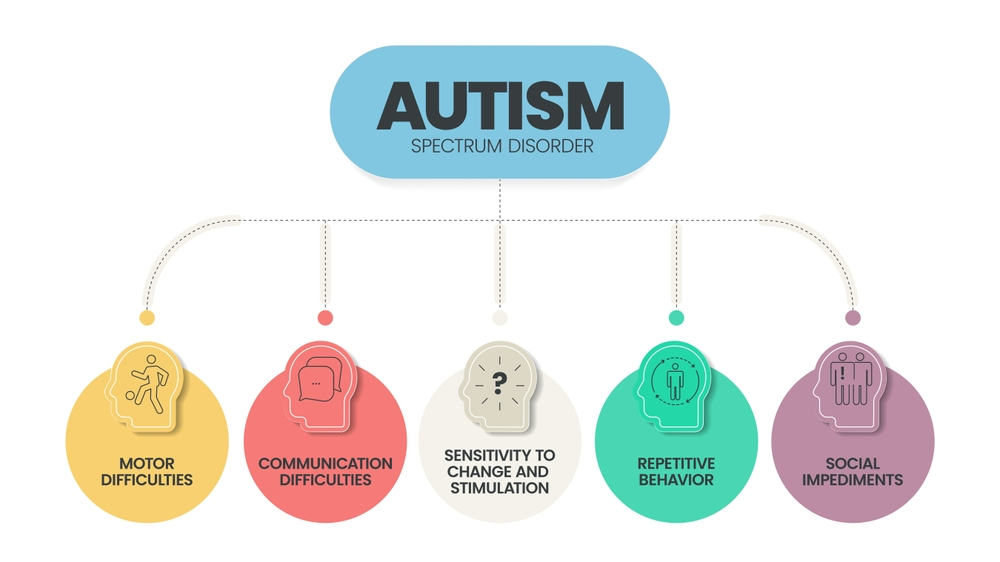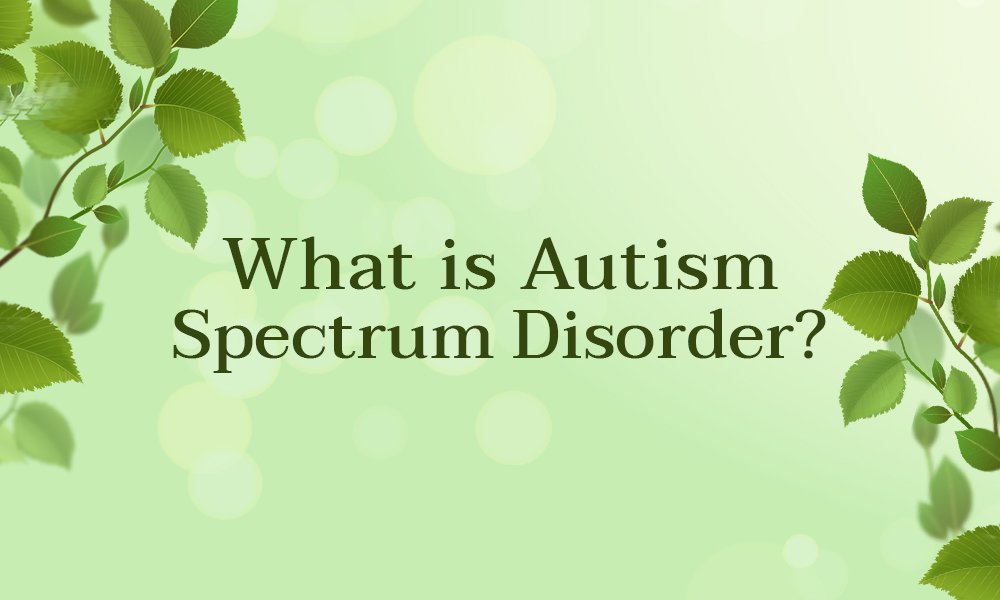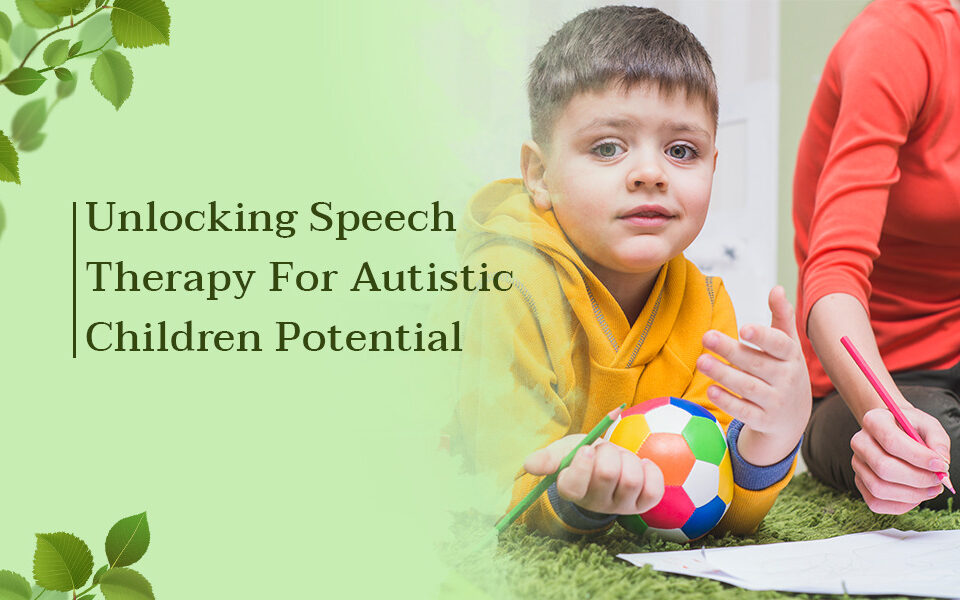- Jofa Tower 5th floor, SB-23, Block 13 C, Main University Rd, Gulshan-e-Iqbal, Karachi.
- +92 322 3746726
- tis@transformation.com.pk
Autism Spectrum Disorder

Autism Spectrum Disorder (ASD)
June 14, 2023
Autism Treatments
June 21, 2023What is Autism Spectrum Disorder?
Autism Spectrum Disorder (ASD) primarily impacts social communication and interaction, as well as presenting a restricted and repetitive pattern of behaviors. Previously, several neuro-developmental disorders, including Asperger’s syndrome, autism, childhood developmental disorder, and pervasive developmental disorder, were considered separate conditions. However, in 2013, the American Psychiatric Association (APA) replaced the term autism with autism spectrum disorder, an umbrella term encompassing all the previously mentioned conditions. This disorder is considered a spectrum disorder as it presents with a varying range of symptoms and severity, affecting each individual differently. Symptoms of autism spectrum disorder become noticeable in early childhood, within the first year, and typically impact a child’s social functioning. Intellectual, motor, language, attention, and sensory deficits may also be present in individuals with autism. Research indicates that autism spectrum disorder is more prevalent in boys than girls. While a cure for autism spectrum disorder does not yet exist, timely interventions can make a significant difference in managing the condition.
What are the symptoms of Autism Spectrum Disorder?
The Diagnostic and Statistical Manual - 5th Edition (DSM-V) categorizes symptoms of ASD into two categories: i) Social communication and interaction, and ii) Restricted and repetitive patterns of behaviors/activities. According to DSM-V, persistent deficits in these two areas should be present within the first three years of life, leading to impairment in functioning. The symptoms falling under these categories are as follows:
- Communication Difficulties: Individuals with autism may have difficulty with verbal and nonverbal communication. They may struggle to initiate or maintain a conversation, and may have trouble understanding figurative language or social cues.
- Social Interaction Challenges: Autistic individuals may struggle with social interaction, such as initiating or responding to social cues, sharing interests or emotions, and making friends.
- Repetitive Behaviours: Individuals with autism may engage in repetitive behaviors, such as rocking, hand-flapping, or repeating words or phrases.
- Sensory Processing Issues: Autistic individuals may have difficulty processing sensory information, such as sights, sounds, and textures. They may be hypersensitive to certain stimuli or may not react to others.
- Fixated Interests: Individuals with autism may have a narrow range of interests and may become fixated on a particular topic or activity.
What are the causes of Autism Spectrum Disorder?
- Genetics: According to research, genetic factors play an important role in the development of autism. Researchers have identified several genes that are linked to autism, including those involved in brain development and neurotransmitter signaling. However, no single gene has been identified as the cause of autism.
- Environmental Factors: Several environmental factors have been linked to the development of autism. These include exposure to toxins during pregnancy, such as pesticides and air pollution, maternal infection during pregnancy, and certain medications taken during pregnancy.
- Neurological Factors: Research has also suggested that certain neurological factors may contribute to the development of autism. These include abnormalities in brain structure and function, such as a larger brain volume and an increase in the number of neurons in certain areas of the brain.

What are the treatments for Autism Spectrum Disorder?
- Behavioral Therapy: Behavioral therapy is one of the most effective treatments for autism. This therapy involves teaching individuals with autism new skills and behaviors through a structured and supportive environment. This therapy can help individuals with autism learn social skills, communication skills, and self-help skills.
- Medication: Medication may be used to treat some of the symptoms of autism, such as anxiety and depression. However, medication is not a cure for autism and should be used in combination with other treatments.
- Occupational Therapy: Occupational therapy is another treatment option for individuals with autism. This therapy involves teaching individuals with autism the skills they need to perform everyday tasks, such as dressing, grooming, and eating. Occupational therapy can also help individuals with autism develop fine motor skills and sensory integration skills.
- Speech Therapy: Speech therapy is another treatment option for individuals with autism. This therapy involves teaching individuals with autism how to communicate effectively, using both verbal and non-verbal communication. Speech therapy can also help individuals with autism develop their social skills and language abilities.
- Educational Support: Educational support is crucial for individuals with autism. This support may include specialized education programs, such as applied behavior analysis (ABA) or individualized education plans (IEPs). These programs can help individuals with autism learn new skills and behaviors, as well as adapt to new environments.
How to create awareness regarding Autism in Pakistan?
Awareness regarding Autism can be created effectively by taking the following steps:
- Collaborate with local schools, colleges, universities, hospitals, and community centers to organize informative workshops and seminars on Autism, its signs, symptoms, causes and the available resources for support.
- Create and share informative content about Autism on various social media platforms such as Facebook, Instagram, Twitter, Youtube, etc. to promote online awareness.
- Coordinate with local newspapers, magazines, radio stations, and TV channels to spread information on Autism and promote events dedicated to raising awareness.
- Collaborate with local government agencies, mental health clinics and NGOs working in the health sector to develop educational materials such as brochures, flyers, and posters that can be distributed across communities.
- Establish or participate in support groups for parents with autistic children to share experiences, provide guidance and promote understanding within the community.
- Celebrate World Autism Awareness Day (April 2) by organizing marches, lighting up buildings in blue light (Light It Up Blue campaign), or hosting themed events.
- Encourage schools to incorporate lessons on Autism as part of their curriculum, allowing students to gain a better understanding of this condition from an early age.
In conclusion, autism is a complex disorder that affects an individual's social communication and behavior. The symptoms of autism can vary widely, but typically involve communication difficulties, social interaction challenges, repetitive behaviors, sensory processing issues, and fixated interests. While the exact causes of autism are not yet fully understood, it is clear that both genetic and environmental factors play a role. However, there are a variety of treatment options available for individuals with autism, including behavioral therapy, medication, occupational therapy, speech therapy, and educational support. With the right combination of treatments and support, individuals with autism can learn new skills and behaviors, and lead happy and fulfilling lives.




